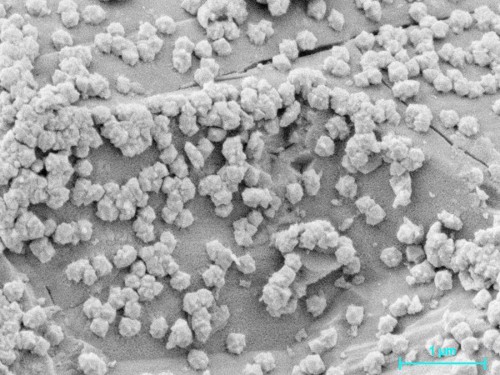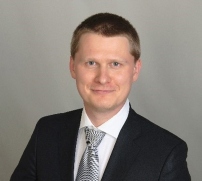2021 AFPM Summit Virtual Edition: ENABLE: FCC CO promoter choice no longer driven by NOx emissions
DARIN FOOTE, CHS; and ALEXIS SHACKLEFORD and ALEKSEI VJUNOV, BASF
Fluidized catalytic cracking units (FCCUs) form coke during the reaction that combusts in the regenerator and supplies heat for the process. The reactions can be full combustion to carbon dioxide (CO2) and water, or partial combustion to carbon monoxide (CO) and water emissions. CO can further combust to CO2. An FCCU may utilize CO promoter additives to catalyze these reactions to:
- Meet environmental regulations on CO emissions.
- Reduce afterburn, which occurs when CO and O2 react in the dilution phase or, less commonly, the flue gas line of the regenerator. In the dilution phase, there is less catalyst to absorb the heat of combustion, potentially causing significant temperature increases above metallurgical limits.
Beyond the desired oxidation reactions, promoters also catalyze the unwanted reaction of nitrogen in the coke to form nitrogen oxides (NOx) (vs. N2). There are two types of CO promoters that use different platinum group metals (PGM), depending on the NOx restrictions:
- Platinum (Pt) promoters allow higher degrees of CO promotion, but generate substantial NOx.
- Non-platinum promoters, which typically use palladium (Pd), generate comparably less NOx, yet are less effective in CO oxidation.
In early 2018, Pt and Pd both cost ~$1,000/t oz (Troy ounce). Today, Pd is more than double the price of Pt (~$1,150/t oz for Pt, and ~$2,600/t oz for Pd)1. As Pd-based catalysts tend to need more metal to achieve equivalent CO promotion, a Pd-based CO promoter is around $25/lb more expensive than a Pt-based promoter. For example, an average unit uses 2 lb–5 lb of CO promoter additive per sT catalyst. At 5 sT/d, that can be a more than $200,000/yr higher cost to use a Pd-based promoter over a Pt-based promoter. (Note: The metals are generally not considered recoverable due to the low concentration in the equilibrium catalyst.) Given this, FCCUs will preferably use Pt-based CO promoters. Pd is used by units that either have an environmental consent decree and/or cannot meet NOx emissions with Pt-based promoters.
Novel promoters. Conventional promoters also have a short half-life (a few days) due to metal sintering under FCC high-temperature conditions. To mitigate these issues, a new generation of CO promoters has been developed. These novel promoters use a tuned PGM-support interaction hindering sintering by anchoring PGM on the support. The resulting morphology modification (FIG. 1) improves promoter durability. Anchoring also allows controlling PGM-oxygen interaction through oxygen on-demand shuttling. The products are designed to have optimized attrition, density and particle size distribution for use in the FCCU.

FIG. 1. SEM image showing customized surface morphology.
The first product of this new platform is ENABLE™,2 a durable Pt-based CO promoter that generates significantly less NOx compared to traditional Pt promoters. In laboratory testing, ENABLE is compared to the latest generation Pd and Pt promoters3 and matches Pd promoter activity at a 15% lower addition (TABLE 1). The NOx generation increases ~10% to Pd (the traditional Pt promoter generates 160% more NOx). For most units, ENABLE allows the Pd vs. Pt choice to no longer be driven by NOx emissions constraints, but rather based on PGM pricing.
|
Pd-based |
ENABLE |
Pt-based |
|
|
CO conversion, % |
50 |
50 |
50 |
|
NOx generation, % |
75 |
82 |
200 |
TABLE 1. The lab testing results for commercial Pd- and Pt-based promoters, as well as ENABLE.
Note: Samples were aged and normalized on a CO conversion (%) basis. Aging: 12 hr, Tmax = 780ºC, flow-through reactor, 10 min air, 10 min N2, 10 min H2, 10 min N2, constant 10% H2O steam. Test: 99% spent catalyst + 1% promoter, 1 L/min, 2 vol% O2/N2, 700ºC.
The first commercial adoption of ENABLE is at CHS Laurel outside Billings, Montana. The refinery processes a severely hydrotreated vacuum gasoil feed and operates in full burn. The site previously used a preblended Pd-based promoter for NOx control, CONQUERNOX (TABLE 2). ENABLE replaced the Pd promoter at a preblended 12.5% lower addition rate to achieve similar CO oxidation activity while staying within the desired NOx limits. The afterburn decreased by half from 44ºF to 22ºF at a lower regenerator bed temperature (a shift to a lighter feed reduced bed temperature). Most importantly, the overall promoter cost ($/d) decreased, a desired benefit in a COVID-19 economic environment.
|
Promoter |
CO (mole %) |
NOx (ppm vol) |
Catalyst bed Temp (ºF) |
Dilute phase temp (ºF) |
Afterburn (ºF) |
|
CONQUERNOX (Pd-based) |
0.005 ± 0.002 |
35.1 ± 7.3 |
1310.1 ± 6.2 |
1354.0 ± 8.1 |
43.9 ± 6.7 |
|
ENABLE (Pt-based) |
0.006 ± 0.002 |
40.3 ± 8.2 |
1300.8 ± 4.9 |
1322.7 ± 5.2 |
21.9 ± 6.7 |
TABLE 2. CHS Laurel regenerator performance for Pd-based CONQUERNOX and Pt-based ENABLE.
In summary, modern Pt-based CO promoters have a price advantage over Pd-based promoters due to PGM pricing. However, NOx limits can inhibit the adoption of Pt promoters. ENABLE, BASF’s next generation Pt-based CO promoter, generates less than 10% more NOx compared to Pd promoters. The technology’s custom tuned PGM-support significantly reduces sintering for enhanced CO promotion durability. With ENABLE, the Pd vs. Pt choice is no longer driven by NOx emissions constraints, but rather by pricing and performance. ENABLE is now in use with several commercial units.
In the first commercial trial at CHS Laurel, ENABLE replaced a Pd-based promoter yielding similar CO emissions, easily staying within the NOx constraint, reducing afterburn by 22ºF, all at 12.5% lower addition rate. ENABLE allows refiners previously limited to high-priced Pd promoters to reduce operating expenses and improve performance.
NOTES
1 Metals pricing per www.macrotrends.net based on year-to-date average
2 ENABLE is a registered trademark of BASF
3 The Pd-based CONQUERNOX and Pt-based USP-500 are used for comparison
ABOUT THE AUTHORS
Darin Foote is an Operations Superintendent at the CHS Inc., Laurel, Montana refinery. In addition to his current role in operations, while at CHS he has held roles in refinery LP modeling, process engineering and turnaround manager. Mr. Foote has been working 21 years in the areas of crude/vacuum, FCCU, solvent extraction and fired heaters. Prior to joining CHS, he worked for Flint Hills Resources and John Zink Company in various roles. Mr. Foote holds a BSChE degree from Brigham Young University in Provo, Utah.

Alexis Shackleford is an Executive Account Manager for BASF based in Metro-Detroit. She provides technical and commercial support for FCCUs around the area. She joined BASF’s Refining catalyst division in 2009 and held a variety of roles including Technology Specialist, Marketing Specialist and Technical Service Engineer. She has authored many oil and gas publications. Prior to BASF, Ms. Shackleford worked at Shell Oil Company’s Deer Park Refinery. She earned a BS degree in chemical engineering from Michigan State University with a minor in biomedical engineering.

Aleksei Vjunov is the Global Product Manager with BASF Refining Catalysts. Prior to this role, he was a Senior Chemist and Team Leader with BASF’s Environmental Catalysis North America R&D based in Iselin, New Jersey. Dr. Vjunov holds BS and MS degrees in chemistry and a PhD in heterogeneous catalysis from TU München, Germany. Prior to joining BASF, he worked as a Researcher at the Pacific Northwest National Laboratory (PNNL) based in Richland, Washington.







Comments